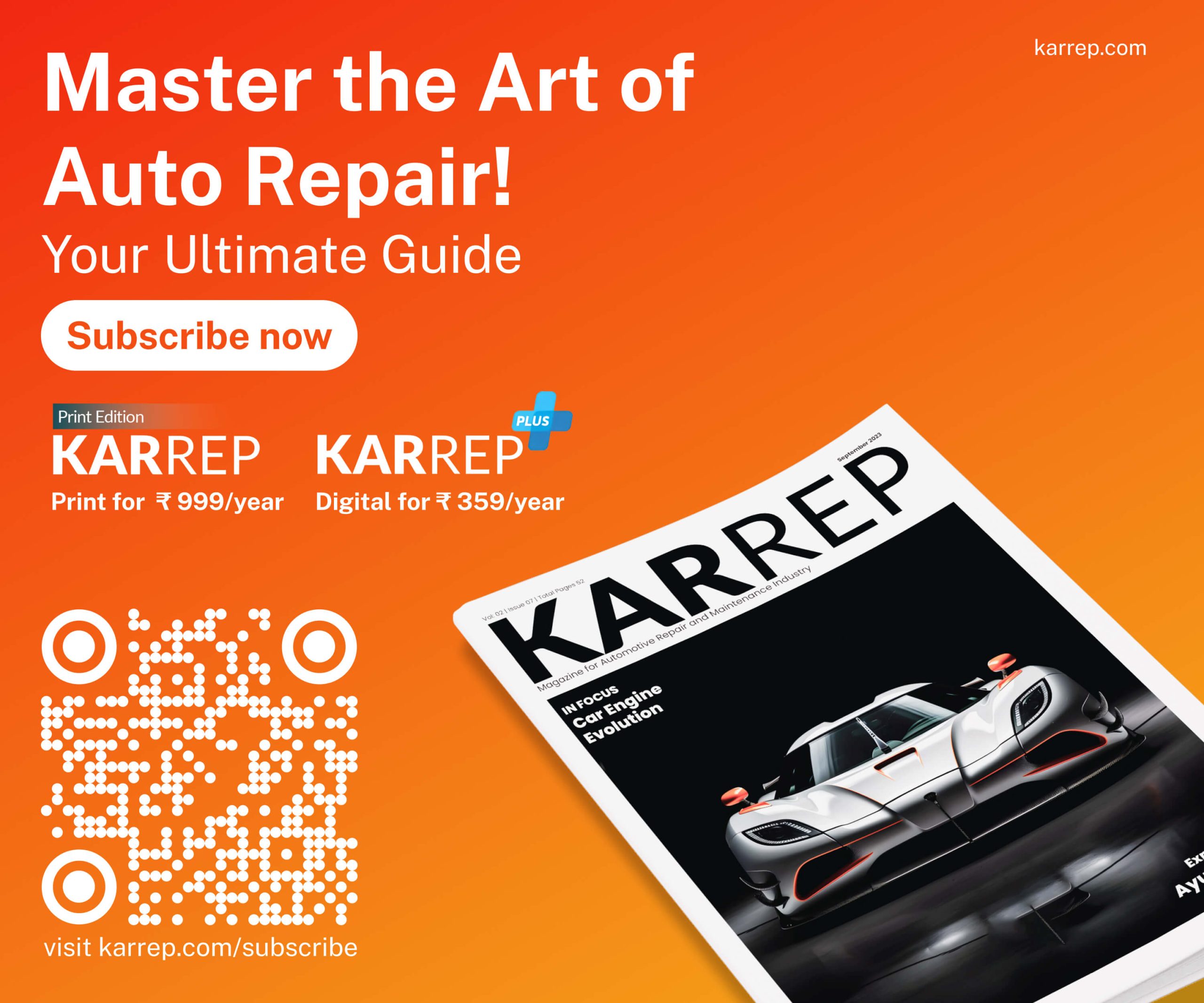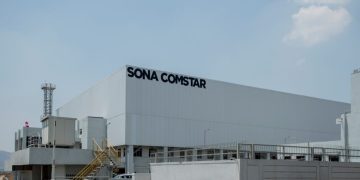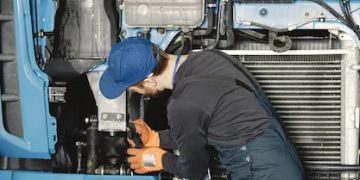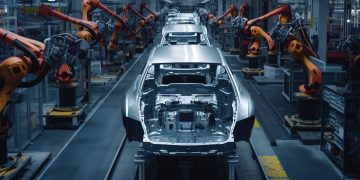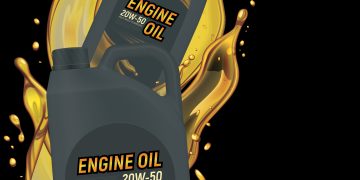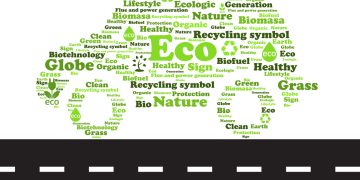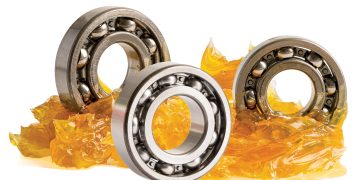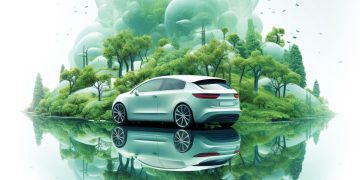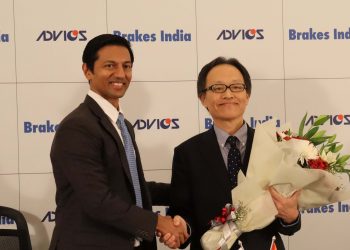The push for sustainability in the automotive industry has become critical, and sustainable value chains are now more important than ever. A significant area that impacts sustainability is the coating industry, where Volatile Organic Compound (VOC)-based coatings are most commonly used. This article explores the significance of non-VOC coatings that will accelerate growth while reducing environmental damage, focusing on non-solvent coatings.
Sustainability is gaining importance across industries and the value chain. Regulatory requirements are changing across geographies with stringent norms on emissions, materials and scrappage. As natural resources become increasingly scarce, sustainable value chains are becoming paramount for the automotive industry. They are based on the innovation and exploration of naturally found resources. Innovation with transparency in the value chain is critical to achieving sustainability in the long run.
Why do the coatings need to be non-VOC ?
Driving a car is not just a convenience but an exhilarating experience overall. Imagine if you could have the excitement of owning and driving a car without worrying about the sustainability impact it causes!
We are indeed moving towards the times when car manufacturing, owning and driving are getting greener. A step in the direction has been zero VOC or low VOC coatings in automotive.
To the uninitiated, VOC coatings are currently most commonly used in automotive. Coatings like Polyurethane, Epoxy and a few others need a carrier for application and adhesion to the surface. The carrier is traditionally a VOC based solvent. It dissolves in the environment after application during drying, causing harm to health and environment.
The Use of VOC Solvents Causes:
- Environmental Impact: Up to 20% of air pollution is attributed to the VOC-based solvents where coating operations are carried out. Ground-level ozone and smog are two ways it impacts.
- Health Hazards: Exposure to VOC can cause respiratory issues, headaches, nausea, and, in extreme cases, it can even be carcinogenic.
- Operational Inefficiency: VOC-based coatings take longer to dry, therefore, are relatively inefficient.
The automotive coatings market size is likely to grow between 6 to 7.2% CAGR to over US$41 bln in 2029. Asia is projected to be the largest market for it. The transition to
low VOC and zero VOC coatings will drive the accelerated growth of the automotive coatings market.
The US and European markets are increasingly moving towards low VOC and zero VOC coatings. In Europe, the move is largely driven by regulations. It is an example of how policy can drive change. In parts where low VOC solution is accepted and is commercially viable, the growth of low VOC coatings is likely to be around 20% according to some reputed market research companies.
Options Among the Non-VOC Coatings
The major trend among low VOC, and zero VOC coatings are:
⬥ Water-based coatings,
⬥ Powder coatings,
⬥ UV curable coatings, and
⬥ Bio-based coatings.
Solvent-based Coatings
Water-based coatings, and bio-based coatings have the same principle as VOC-based coatings in the way of application except for the solvent. Water-based coatings use water as the primary solvent however, they may contain a small amount of VOC as well. The impact of VOC, however, is minimal due to the negligible amount of VOC. This is the most popular non-VOC coating by volume currently.
Bio-based coatings use natural solvents, like Linseed oil, Soybean, Corn, and Cellulose derived from Wood, Cotton, Hemp etc. Solvents made from Linseed oil and Soy are suitable for automotive and industrial coatings, while other bio-based coatings are more suitable for food packaging, biomedical, textile and paper.
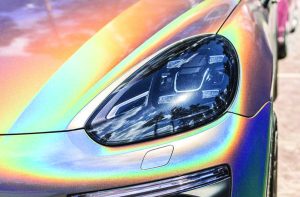
Solvent Free Coatings
Powder coatings and UV- Curable Coatings are solvent-free; eliminating the chances of emissions due to VOC-based solvents.
Powder coatings are dry powder applied on the surface and then heat-cured to a lasting coating. The process of powder coating may use pre-treatment chemicals that may contain a small amount of VOC, therefore it may not be tagged as Zero VOC. It, however, has very low VOC emissions compared to VOC-based coatings.
In the same way, some of the UV-Curable Coatings cause significantly lower VOC emissions but the coating itself contains a small number of monomers and oligomers that are emitted during the curing process. Both these coatings, however, can be considered safe from health and environmental hazards at an acceptable level.
A comparative study of non-VOC coatings reveals that the selection of coating will largely depend on the production process, specific applications like the specific layer of coats, and specific parts or areas of the automobile. Regulatory requirements, availability and regional factors also play a role in the selection of the type of coatings. Appearance creates a significant impression of quality on the customer; therefore, for automotive OEMs, the coating quality parameters are important to consider. Figure 1 shows the representative study of coating performance, ease of operation, cost-effectiveness and environmental impact.
Currently, water-based coatings are more practical among automotive OEMs, however, the changes in regulations and increasing ease of operation for UV-Curable and Powder Coating present viable options in the short to medium term.
Non-solvent Era of Coatings
Powder Coatings and UV- Curable Coatings alleviate VOC emissions to a great extent mainly due to the fact that these coatings do not need solvents in the first place. Each has properties that are useful for different applications. The cost of UV-Curable Coatings appears to be high at first but when compared for coverage using a stable operations set-up, the square foot per gallon cost of UV-Curable Coating is the same or less because you can use 100% solids to gain better coverage compared to solvent-based coatings.
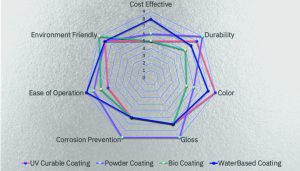
Powder Coatings
Powder Coatings have become increasingly popular in automotive applications. On the positive side, powder coatings provide high durability. It is resistant to chipping, scratching and fading in rough weather and driving conditions. It makes it ideal for underbody coating applications. The process of powder coating has high efficiency and is relatively less cost intensive than solvent-based coatings as they require less material and labour.
On the other hand, powder coating requires careful pre-treatment of the surface. Proper adhesion depends on pre-treatment and on making the surface free of oil, grease, and other contaminants. Pre-treatment may involve a bit of VOC material as well. While the overall cost of the coating and labour is cheaper, the specialised equipment for applying, including the electrostatic spray guns, ovens and recovery system can be expensive. To attain a high gloss finish several factors need to be controlled like temperature, humidity and flow rate etc. which can be tricky in some circumstances and increases cost. Repair of powder coating can be challenging as it gets hard to match the colour and texture.
The automotive industry has been able to overcome the challenges to harness the benefits of powder coating and thus it is one of the popular options.
The process of powder coating is relatively straightforward if equipment and expertise are in place:
- Surface preparation is very important for the adhesion of the power coating.
- To apply the coat, the electrostatic gun applies the charge to the powdered coating particles, which causes them to stick to the surface.
- The next step is to heat the coated surface in an oven to cause the melting of the powder and flow into a smooth and even coating.
- Cooling is the next step after which the surface goes through quality checks and usually for packaging thereafter.
Through research, there have been several advancements in the powder coating area:
- Smart Coatings: A type of Powder Coating that changes colour and appearance in response to changes in environments like temperature and light. It has applications in automotive as well as in glass and exterior paints and plastic parts.
- Hybrid Powder and UV-Curable Coating: Powder coating material that is cured by UV instead of heat. It overcomes several challenges in powder coating like curing time, energy consumption and colour stability.
- Improvement in the Powder Coating Material: There is continuous improvement in formulations of powder coating that provide better adhesion, durability, gloss and coverage.
- Improvement in the Equipment: The advancements in the electrostatic guns, ovens and recovery systems can make powder coating cheaper and viable for many applications than they are known for today.
UV-Curable Coatings
The UV-Curable Coating process is a fast, efficient, and environmentally friendly way to apply coatings in the automotive industry. It offers a number of benefits over traditional liquid coatings, including faster curing times, reduced energy consumption, and improved colour stability.
The Process Involves:
- Surface Preparation: Making the surface free of oil, grease and contaminants is crucial for the adhesion of the coating.
- Application: The coating material is applied using spray-guns, rollers or other methods to form an even coating.
- UV-Curing: The coated surface is exposed to UV radiation. Photoinitiators in the coating material upon receiving UV radiation start a chemical reaction that causes the coating to harden and form a durable film.
- Next step usually is the quality checks and finally packaging or forwarding to the next operation as the case may be.
UV -Curable Coatings are usually made of:
- Photoinitiators: These compounds initiate the crosslinking process when exposed to UV light that starts the chemical process of polymerization of other components in the coating.
- Oligomers: These are short chains of polymer molecules that make up the bulk of the coating material. They are responsible for the coating’s hardness, flexibility, and adhesion.
- Monomers: These are small molecules that react with the oligomers to form the polymer chains that make up the coating. They help to control the coating’s viscosity and curing speed.
- Additives: These substances are added to the coating material to improve performance or appearance.
- Solvents: These are used to dissolve the oligomers and monomers to form a coating that evaporates during curing. It is not to be confused with additional solvent needed like VOC and Water based coatings.
Biggest advantage of UV-curable coating is its faster curing time and lesser energy requirement when compared to powder coating etc. It also provides good durability and scratch resistance along with chemical resistance making it a good option for automotive coating.
On the flip side, the depth of UV-curing is usually not great therefore thick coats might suffer from improper curing, causing poor performance. The initial investment can also be high, but usually, it is recoverable because of better coverage when compared to solvent-based coatings. Healthwise, there are risks of UV exposure but those can be overcome by proper operational methods and expertise.
Promise of Nanotechnology
Nanotechnology has found its way into automotive coatings. Some OEMs have started using nanotechnology in coatings since the early 2000s.
BMW has been reported to use nanotechnology in multi-layers to improve durability and scratch resistance. Recently, BMW unveiled the world’s blackest car using nanotechnology coating, called Vantablack. Vantablack is a two-syllable word where the first syllable contains an acronym for “Vertically Aligned Nanotubes Array”.
Nissan, in 2014 launched Ultra-Ever Dry paint based on the nano-paint treatment to create a super hydrophobic surface that claimed to repel all water-based and some oil-based liquids. Ford, Tesla, and Audi have also been reported to use nanotechnology-based paints to improve the durability and reflectivity of the coatings.
In summary, nanotechnology can be a highly potential option for OEMs and refinishers alike to achieve high durability, ease of operation and sustainability.
Conclusion
Non-VOC coatings are the de-facto future of coatings. Automotive OEMs have been vigilant in the adoption of environment-friendly options and have been investing in research, manufacturing and procurement of coatings and coating methods that are sustainable. The rate of improvement in sophistication and efficiency of automotive coatings has been rapid and dramatic in the past 20-30 years. Coating materials and methods of application both have evolved. New advancements are seeing the combinations of methods that were not found feasible earlier. As customer expectations increase in terms of appearance, durability and available options, automotive OEMs need to try more options.
Being environment-friendly is no longer only a regulatory requirement. Customers are equally sensitive to sustainable options. Achieving non-VOC coatings, therefore, is an important aspect of the Automotive OEMs and refinishers. Non-solvent coatings like Powder Coating and UV-Curable Coatings explored here are excellent candidates in the short and medium term. In time there is potential for nanotechnology to be pervasive and other new technological advances to arrive. Until then, there is enough reason to adopt non-solvent coatings or a combination of those coatings to meet the non-VOC targets.
Finally, coatings impact us significantly from sustainability, habitation, mobility, lifestyle, and cost point-of-view for automotive and other applications. It will continue
to be the area where innovation will drive market growth and excitement among consumers.

SAURABH CHATURVEDI
Delivery Project Executive: Automotive & Energy Industry | Complex Program Manager: Hybrid Multicloud, IBM Consulting

SANKALP SINHA
Business Development Executive – Automotive Aerospace & Defense, IBM Consulting India


